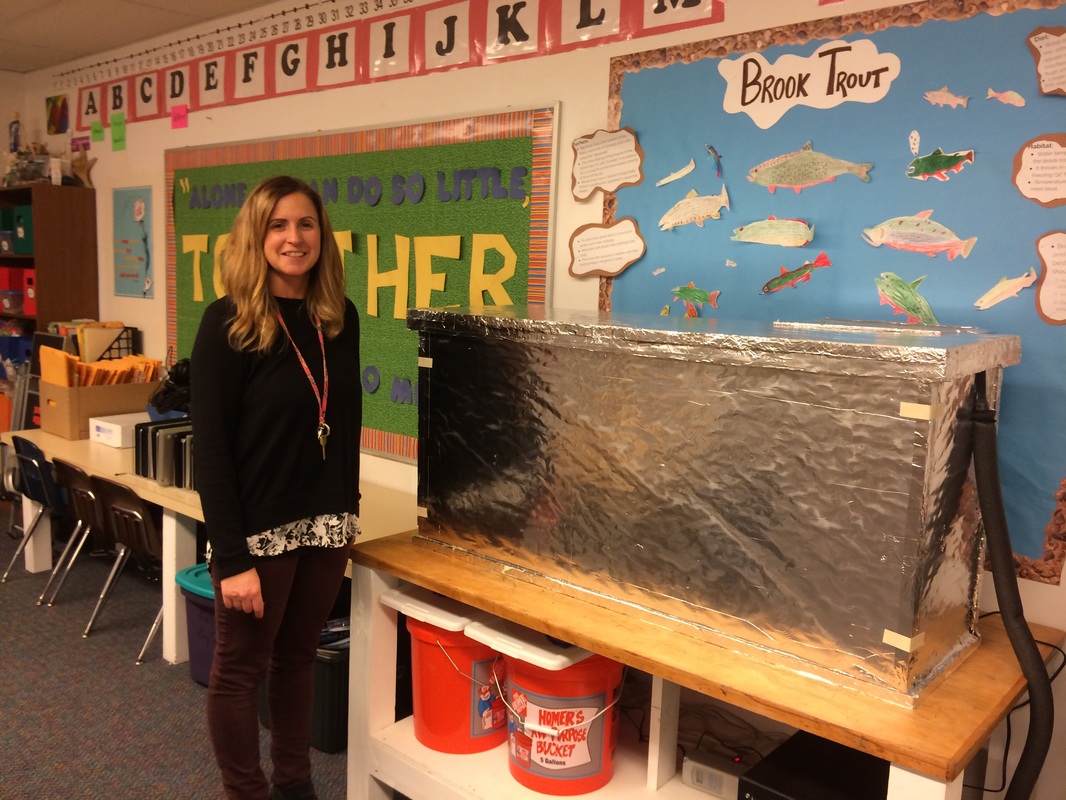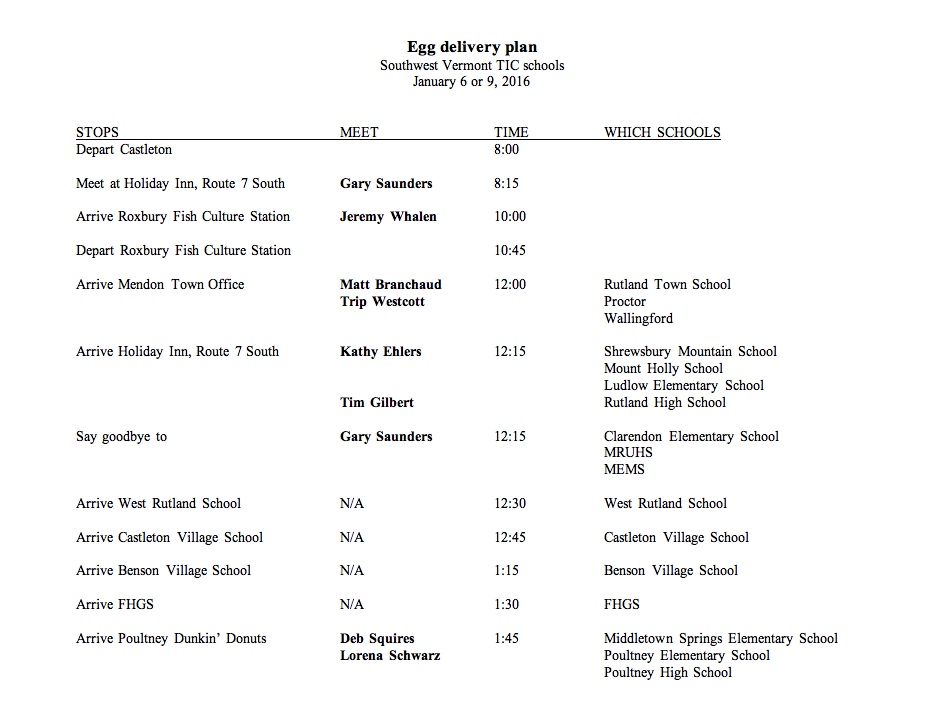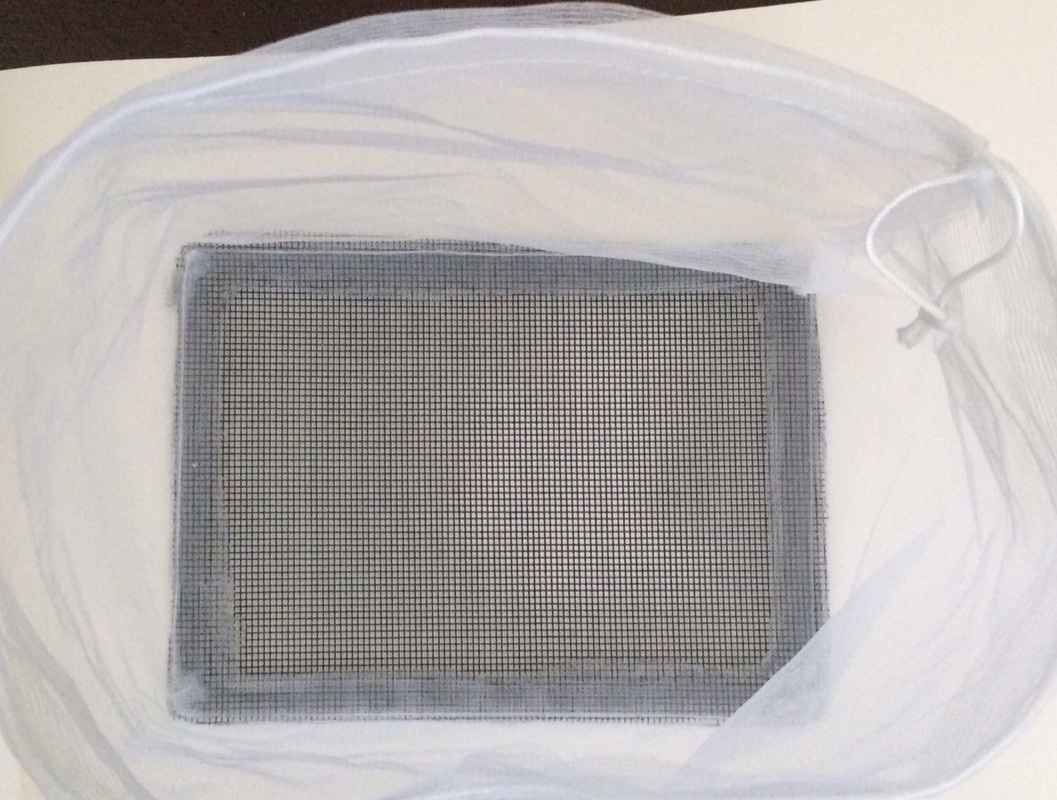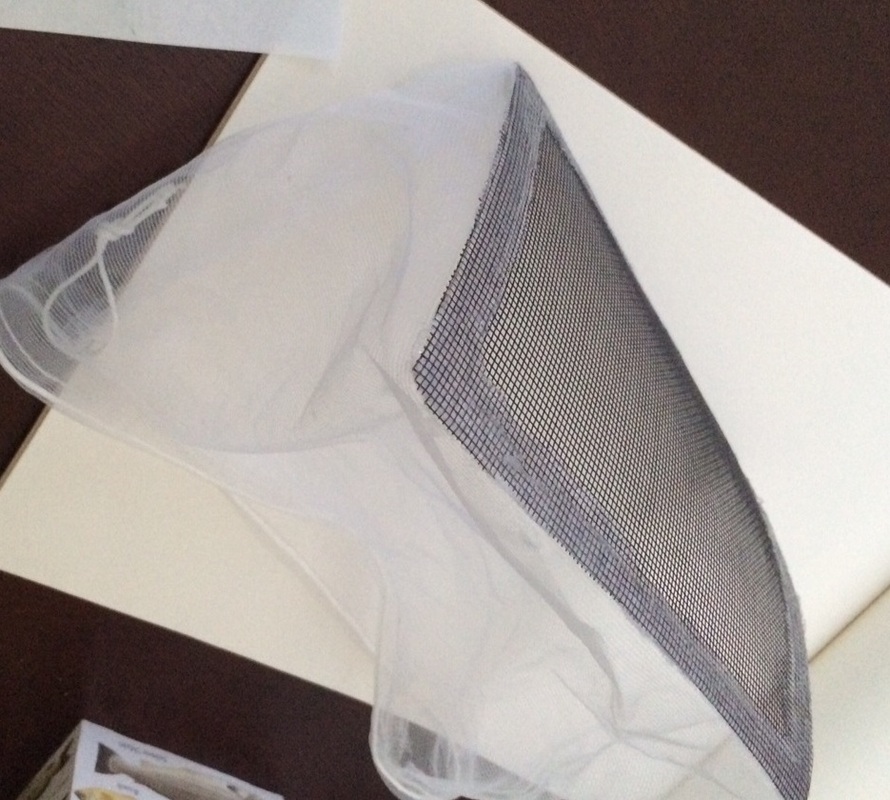|
I hope that you've either got your tank set up and insulated or that you plan to do so in the next few days. Here's a picture taken Tuesday evening of Emma Vastola, of Mount Holly School, right after she and community volunteers Kathy Ehlers and Gordon Batcheller finished setting up her tank.. Once you've got everything tested and have established that your chiller can cool the water to 45 degrees or so, you can set the chiller at a more reasonable, less energy-consuming, temperature, e.g., 60 or 65 degrees. Make sure you keep your tank wrapped in its foam-board "blanket" both to insulate it and to protect it from light. Especially when the water is warmer, light can promote the growth of algae, which wouldn't be good. Please reread Chapter 4, Preparing and Transitioning Eggs, pp. 25 & 26 of the Maryland TIC Manual, except that you won't be setting your tank to 52 degrees at this point. We will raise it to that gradually after you've gotten your eggs, but on the day in early January that your eggs arrive, we want your water to be fairly close to the temperature of the water at the hatchery, at least within five degrees of it. On or about December 20, I'll let you know what the water temperature is at the Roxbury hatchery. (It was a chilly 39 degrees this morning!) You should then set your chiller to that much lower temperature and keep it approximately there until you get your eggs. Here are some photos taken of the Moretown TIC tank and students and of the TIC team and set-up at Camels Hump Middle School. Egg delivery plans A few TIC teachers plan to pick up their own eggs at the hatchery, but the vast majority will be having their eggs delivered to them by a TIC volunteer during either the first or second week of January. In most parts of the state, the TIC regional "liaison" is organizing a schedule for those deliveries, and in the regions with numerous TIC schools, getting out all the eggs will require assistance from other volunteers and, perhaps even, a tightly coordinated schedule of hand-offs and deliveries. (Contact your local TIC liaison or community volunteer to confirm the date and time of egg delivery.) When all goes well, the TIC team's performance on egg-delivery day is as beautiful as an Olympic gold-medal-winning relay race! Now we just have to worry about the weather. Here's what our plan looks like for getting eggs to 17 of southwest Vermont's 20 TIC schools. Modify those breeder baskets! As Bob Wible and I discussed at the TIC workshop, it's highly desirable to modify the breeder baskets that we buy from ThatPetPlace.com. There are two problems with the standard commercial breeder baskets:
Below I've provided two photos of what Bob's modified mesh bag looks like. Numbers update
In the last post I reported that 67 schools would be participating in the TIC program this year, up from 37 last year. Well, in fact that number has inched up in the last two weeks. We now have 69 schools in virtually every corner of the state participating (and 70 tanks). These schools are being supported by 93 teachers and 29 volunteers. I'd say that's pretty impressive!
0 Comments
Leave a Reply. |
Joe Mark, Lead Facilitator, Vermont Trout in the Classroom
In June 2012, I retired after 40 years in higher education, having spent the last 32 years of my career as dean at Castleton. One of the first things I volunteered to do in retirement was to work with Jim Mirenda to help the Dorset School, where his kids and my Vermont grandkids attend, start a TIC program. Gradually that commitment grew into my current role, which is both demanding and highly rewarding. Archives
June 2017
Categories |





 RSS Feed
RSS Feed
